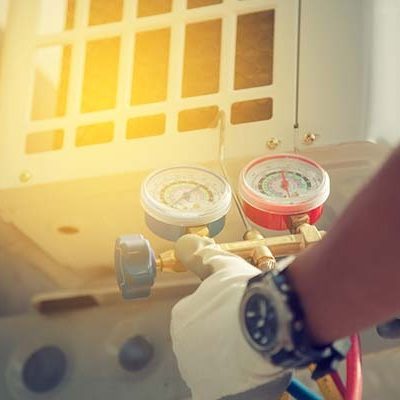Whether you have a traditional air conditioner (AC) unit or a heat pump in your home, it probably contains refrigerant. Alternating between a gas and liquid state, it’s responsible for absorbing heat from inside your home, which in turn cools your home.
However, being that refrigerant is hidden inside lines – known as refrigerant lines – you might be wondering how it works exactly.
The Basics of How Refrigerant Works
Refrigerant runs through both the evaporator coil as well as the condenser coil. At the condenser coil, coolant is liquid. At the evaporator coil, coolant is gas. Coolant relies on this constant liquid-to-gas cycling to cool the air inside your home.
To lower the temperature inside your home, AC units and heat pumps absorb heat and moisture from the air at the evaporator coil.
When this occurs, the refrigerant turns from gas to liquid. The liquid refrigerant, which now contains the heat absorbed at the evaporator coil, travels to the condenser coil where the heat is released via a fan.
As the temperature of the refrigerant drops, it reverts back to a gas state. This cycle continues until the desired indoor temperature has been achieved and the AC unit or heat pump shuts off.
R-22 vs R-410A Refrigerant: What’s the Difference?
There are two primary types of refrigerants used in AC systems, including R-22 and R-410A.
Over the past few decades, the use of R-22 refrigerant has declined in favor of the newer and more environmentally friendly R-410A.
The Environmental Protection Agency (EPA) has even mandated a complete phaseout of R22 in the United States by 2020 as part of the Clean Air Act.
Also known by its brand name Freon, was used extensively in residential and commercial AC units and heat pumps for many decades. It’s non-toxic and nonflammable.
The downside to R-22 is its destructive effects on the environment. When R-22 leaks into the atmosphere, it destroys Earth’s ozone layer.
Signs of Low Refrigerant
If your AC unit or heat pump runs low on refrigerant, you may notice one or more telltale signs. The most common symptom is insufficient cooling power.
When refrigerant drops below the appropriate level, your AC unit or heat pump may struggle to remove heat from the indoor air.
In addition to insufficient cooling power, you may notice ice forming on the evaporator coil and/or condenser coil if your system is running low on refrigerant.
If there’s a small leak, ice may form on the coils. Of course, the ice will typically stop forming once all the refrigerant has leaked completely out.
If you are experiencing a problem with your air conditioning or heating, call us at 512-336-1431 to schedule an appointment. We’ll be glad to come out and take a look at your issue.
1431-183 A/C & Heating proudly serves Round Rock, Georgetown, Cedar Park, Pflugerville, Leander, Liberty Hill, and North Austin.

